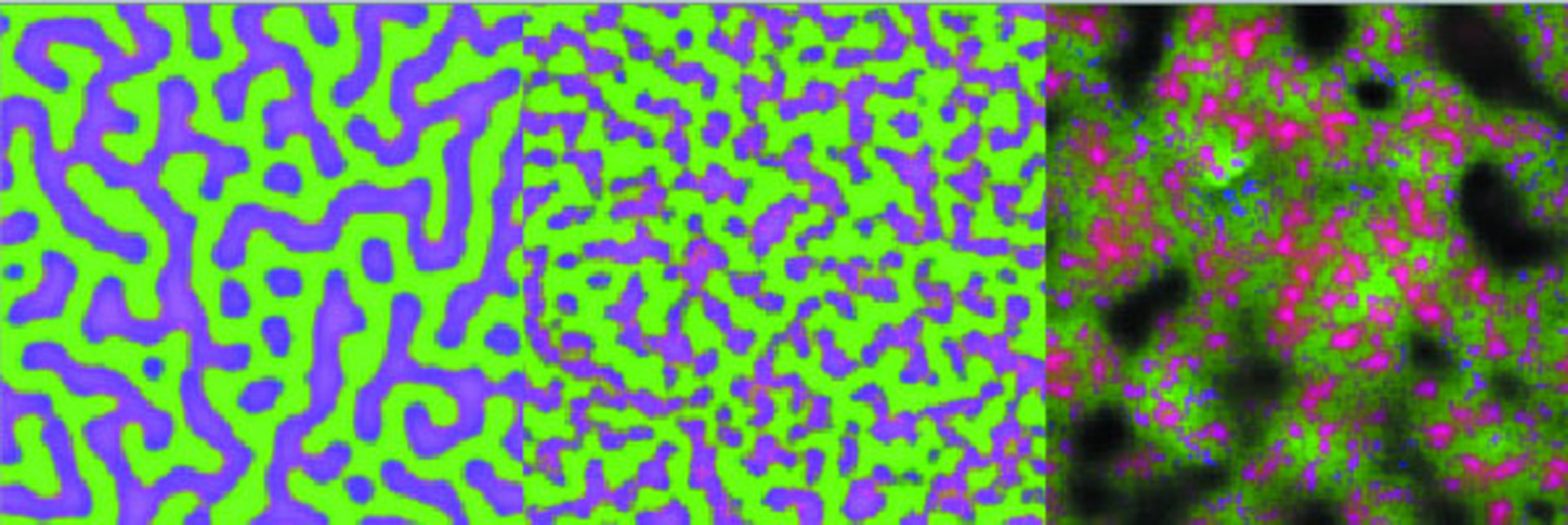“Texture Synthesis Using Reaction-Diffusion Systems and Genetic Evolution” by Zumpella and Thall
Conference:
Type(s):
Entry Number: 019
Title:
- Texture Synthesis Using Reaction-Diffusion Systems and Genetic Evolution
Presenter(s)/Author(s):
Abstract:
We demonstrate that genetic algorithms are an effective means to tune reaction-diffusion parameters for the purposes of automatic texture generation. By combining two biologically-based computational methods, we provide a mechanism to explore the space of image-textures by means of natural selection using aesthetic criteria.
Reaction-diffusion systems are based on a chemical mechanism for pattern formation proposed by Turing [1952] and first used in computer graphics for image-texture synthesis by Witkin and Kass [1991] and by Turk [1991]. Such systems have advantages for image-texture generation, including the ability to be generated inplace on boundary meshes to avoid tears or seams in the texture patterns. A drawback of reaction-diffusion methods, however, is their sensitivity to initial conditions and the consequent unpredictability of the generated patterns with respect to perturbation of input parameters. Our research uses a genetic algorithm to explore the parameter spaces of reaction-diffusion systems, using input from a human participant as the fitness function to guide the evolution. The use of genetic evolution for image-generation was first explored by Sims [1991] using image-generating LISP functions; more recent work includes that of Lewis [2001] that evolved procedural shaders.
References:
1. Lewis, M. 2001. Creating Continuous Design Spaces for Interactive Genetic Algorithms with Layered, Correlated Pattern Functions. PhD thesis, Ohio State University.
2. Sims, K. 1991. Artificial evolution for computer graphics. In Proceedings of the 18th annual conference on Computer Graphics and interactive techniques, ACM Press, SIGGRAPH 91, 319–328.
3. Turing, A. M. 1952. The chemical basis of morphogenesis. Phil. Trans. Royal Soc. of London B: Biological Sciences, 237, 37–72.
4. Turk, G. 1991. Generating textures on arbitrary surfaces using reaction-diffusion. In Proceedings of the 18th annual conference on Computer Graphics and interactive techniques, ACM Press, SIGGRAPH 91, 289–298.
5. Witkin, A., and Kass, M. 1991. Reaction-diffusion textures. In Proceedings of the 18th annual conference on Computer Graphics and interactive techniques, ACM Press, SIGGRAPH 91, 299–308.




